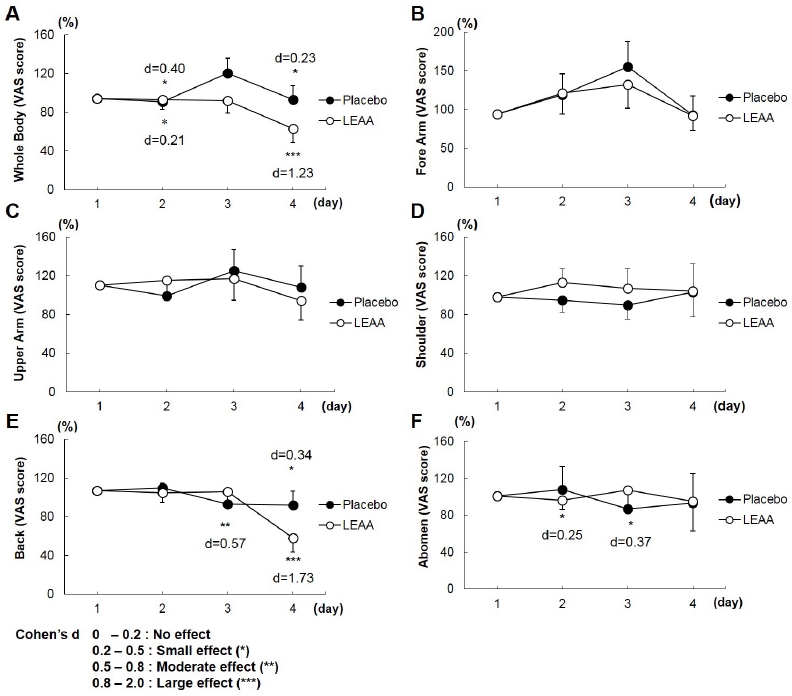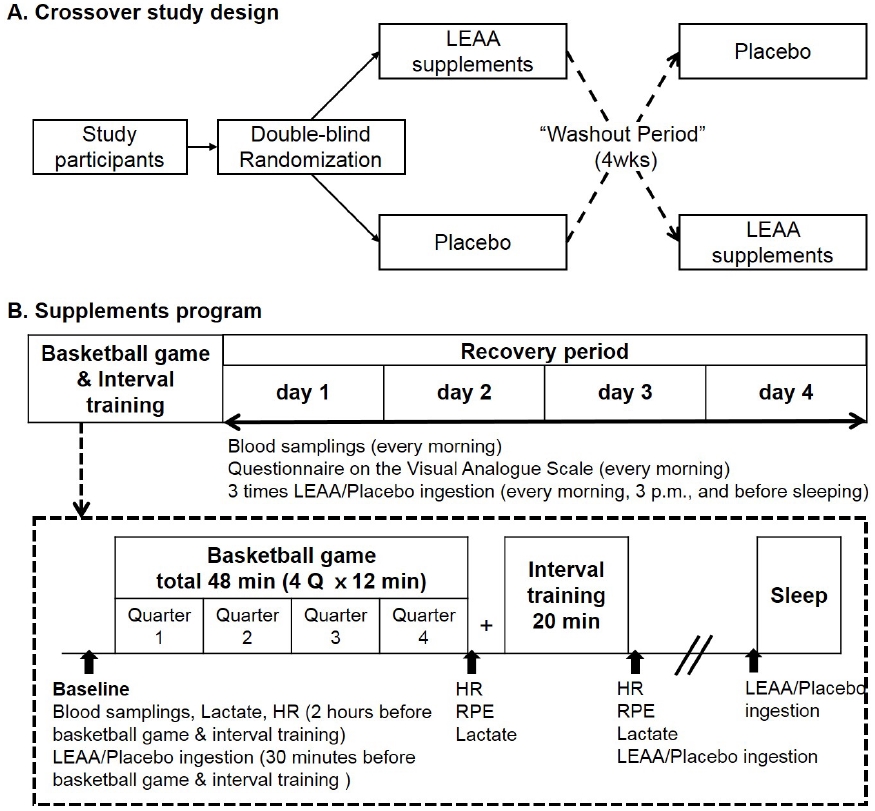1.
Hollar DW Jr. Disability and health outcomes in geospatial analyses of Southeastern U.S. county health data.
Disabil Health J. 2017;10:518-24.
. PMID:
10.1016/j.dhjo.2017.01.003.
2.
Maher JL, McMillan DW, Nash MS. Exercise and health-related risks of physical deconditioning after spinal cord injury.
Top Spinal Cord Inj Rehabil. 2017;23:175-87.
. PMID:
10.1310/sci2303-175.
3.
Silveira SL, Ledoux TA, Robinson-Whelen S, Stough R, Nosek MA. Methods for classifying obesity in spinal cord injury: a review.
Spinal Cord. 2017;55:812-7.
. PMID:
10.1038/sc.2017.79.
4.
Dearwater SR, LaPorte RE, Robertson RJ, Brenes G, Adams LL, Becker D. Activity in the spinal cord-injured patient: an epidemiologic analysis of metabolic parameters.
Med Sci Sports Exerc. 1986;18:541-4.
. PMID:
10.1249/00005768-198610000-00008.
5.
Nash MS, Mendez AJ. A guideline-driven assessment of need for cardiovascular disease risk intervention in persons with chronic paraplegia.
Arch Phys Med Rehabil. 2007;88:751-7.
. PMID:
10.1016/j.apmr.2007.02.031.
6.
Phillips WT, Kiratli BJ, Sarkarati M, Weraarchakul G, Myers J, Franklin BA, Parkash I, Froelicher V. Effect of spinal cord injury on the heart and cardiovascular fitness.
Curr Probl Cardiol. 1998;23:641-716.
. PMID:
10.1016/S0146-2806(98)80003-0.
7.
Hopman MT, Monroe M, Dueck C, Phillips WT, Skinner JS. Blood redistribution and circulatory responses to submaximal arm exercise in persons with spinal cord injury. Scand J Rehabil Med. 1998;30:167-74.
.
8.
Hjeltnes N. Oxygen uptake and cardiac output in graded arm exercise in paraplegics with low level spinal lesions. Scand J Rehabil Med. 1977;9:107-13.
.
9.
Jeng SC, Chang CW, Liu WY, Hou YJ, Lin YH. Exercise training on skill-related physical fitness in adolescents with intellectual disability: a systematic review and meta-analysis.
Disabil Health J. 2017;10:198-206.
. PMID:
10.1016/j.dhjo.2016.12.003.
10.
Shapiro DR, Malone LA. Quality of life and psychological affect related to sport participation in children and youth athletes with physical disabilities: a parent and athlete perspective.
Disabil Health J. 2016;9:385-91.
. PMID:
10.1016/j.dhjo.2015.11.007.
11.
Uzun S, Pourmoghaddam A, Hieronymus M, Thrasher TA. Evaluation of muscle fatigue of wheelchair basketball players with spinal cord injury using recurrence quantification analysis of surface EMG.
Eur J Appl Physiol. 2012;112:3847-57.
. PMID:
10.1007/s00421-012-2358-0.
12.
van der Woude LH, van Croonenborg JJ, Wolff I, Dallmeijer AJ, Hollander AP. Physical work capacity after 7 wk of wheelchair training: effect of intensity in able-bodied subjects.
Med Sci Sports Exerc. 1999;31:331-41.
. PMID:
10.1097/00005768-199902000-00018.
13.
International Wheelchair Basketball Federation.
http://www.iwbf.org/ (2012). Accessed 20 Sept 2017.
.
14.
Matsumoto K, Koba T, Hamada K, Sakurai M, Higuchi T, Miyata H. Branched-chain amino acid supplementation attenuates muscle soreness, muscle damage and inflammation during an intensive training program. J Sports Med Phys Fitness. 2009;49:424-31.
.
15.
Baird MF, Graham SM, Baker JS, Bickerstaff GF. Creatine-kinase- and exercise-related muscle damage implications for muscle performance and recovery.
J Nutr Metab. 2012;2012:960363.
. PMID:
10.1155/2012/960363.
16.
Tajra V, Tibana RA, Vieira DC, de Farias DL, Teixeira TG, Funghetto SS, Silva AO, de Sousa NM, Willardson J, Karnikowski MG, Prestes J. Identification of high responders for interleukin-6 and creatine kinase following acute eccentric resistance exercise in elderly obese women.
J Sci Med Sport. 2014;17:662-6.
. PMID:
10.1016/j.jsams.2013.09.012.
17.
Miles MP, Pearson SD, Andring JM, Kidd JR, Volpe SL. Effect of carbohydrate intake during recovery from eccentric exercise on interleukin-6 and muscle-damage markers.
Int J Sport Nutr Exerc Metab. 2007;17:507-20.
. PMID:
10.1123/ijsnem.17.6.507.
18.
Hennigar SR, McClung JP, Pasiakos SM. Nutritional interventions and the IL-6 response to exercise.
FASEB J. 2017;31:3719-28.
. PMID:
10.1096/fj.201700080R.
19.
Pedersen BK, Åkerström TC, Nielsen AR, Fischer CP. Role of myokines in exercise and metabolism.
J Appl Physiol. 2007;103:1093-8.
. PMID:
10.1152/japplphysiol.00080.2007.
20.
Febbraio MA, Pedersen BK. Muscle-derived interleukin-6: mechanisms for activation and possible biological roles.
FASEB J. 2002;16:1335-47.
. PMID:
10.1096/fj.01-0876rev.
21.
Febbraio MA, Pedersen BK. Contraction-induced myokine production and release: is skeletal muscle an endocrine organ?
Exerc Sport Sci Rev. 2005;33:114-9.
. PMID:
10.1097/00003677-200507000-00003.
22.
Giannini S, Nobile M, Sella S, Dalle Carbonare L. Bone disease in primary hypercalciuria.
Ctit Rev Clin Lab Sci. 2005;42:229-48.
. PMID:
10.1080/10408360590913533.
23.
Inanir A, Ozoran K, Tutkak H, Mermerci B. The effects of calcitriol therapy on serum interleukin-1, interleukin-6 and tumour necrosis factor-alpha concentrations in post-menopausal patients with osteoporosis.
J Int Med Res. 2004;32:570-82.
. PMID:
10.1177/147323000403200602.
24.
Gleeson M, Nieman DC, Pedersen BK. Exercise, nutrition and immune function.
J Sports Sci. 2004;22:115-25.
. PMID:
10.1080/0264041031000140590.
25.
Fouré A, Bendahan D. Is branched-chain amino acids supplementation an efficient nutritional strategy to alleviate skeletal muscle damage? A Systematic Review.
Nutrients. 2017;9:1047.
. PMID:
10.3390/nu9101047.
26.
Crozier SJ, Kimball SR, Emmert SW, Anthony JC, Jefferson LS. Oral leucine administration stimulates protein synthesis in rat skeletal muscle.
J Nutr. 2005;135:376-82.
. PMID:
10.1093/jn/135.3.376.
27.
Song X, Kusakari Y, Xiao CY, Kinsella SD, Rosenberg MA, Scherrer-Crosbie M, Hara K, Rosenzweig A, Matsui T. mTOR attenuates the inflammatory response in cardiomyocytes and prevents cardiac dysfunction in pathological hypertrophy.
Am J Physiol Cell Physiol. 2010;299:C1256-66.
. PMID:
10.1152/ajpcell.00338.2010.
28.
Ge Y, Wu AL, Warnes C, Liu J, Zhang C, Kawasome H, Terada N, Boppart MD, Schoenherr CJ, Chen J. mTOR regulates skeletal muscle regeneration in vivo through kinase-dependent and kinase-independent mechanisms.
Am J Physiol Cell Physiol. 2009;297:C1434-44.
. PMID:
10.1152/ajpcell.00248.2009.
29.
Kirby TJ, Triplett NT, Haines TL, Skinner JW, Fairbrother KR, McBride JM. Effect of leucine supplementation on indices of muscle damage following drop jumps and resistance exercise.
Amino Acids. 2012;42:1987-96.
. PMID:
10.1007/s00726-011-0928-9.
30.
Dreyer HC, Drummond MJ, Pennings B, Fujita S, Glynn EL, Chinkes DL, Dhanani S, Volpi E, Rasmussen BB. Leucine-enriched essential amino acid and carbohydrate ingestion following resistance exercise enhances mTOR signaling and protein synthesis in human muscle.
Am J Physiol Endocrinol Metab. 2008;294:E392-400.
. PMID:
10.1152/ajpendo.00582.2007.
31.
Kato H, Miura K, Nakano S, Suzuki K, Bannai M, Inoue Y. Leucine-enriched essential amino acids attenuate inflammation in rat muscle and enhance muscle repair after eccentric contraction.
Amino Acids. 2016;48:2145-55.
. PMID:
10.1007/s00726-016-2240-1.
32.
Bassit RA, Sawada LA, Bacurau RF, Navarro F, Martins E Jr, Santos RV, Caperuto EC, Rogeri P, Costa Rosa LF. Branched-chain amino acid supplementation and the immune response of long-distance athletes.
Nutrition. 2002;18:376-9.
. PMID:
10.1016/S0899-9007(02)00753-0.
33.
Jackman SR, Witard OC, Jeukendrup AE, Tipton KD. Branched-chain amino acid ingestion can ameliorate soreness from eccentric exercise.
Med Sci Sports Exerc. 2010;42:962-70.
. PMID:
10.1249/MSS.0b013e3181c1b798.
34.
OLIVER IT. A spectrophotometric method for the determination of creatine phosphokinase and myokinase.
Biochem J. 1955;61:116-22.
. PMID:
10.1042/bj0610116.
35.
Sellwood KL, Brukner P, Williams D, Nicol A, Hinman R. Ice-water immersion and delayed-onset muscle soreness: a randomised controlled trial.
Br J Sports Med. 2007;41:392-7.
. PMID:
10.1136/bjsm.2006.033985.
36.
Close GL, Ashton T, Cable T, Doran D, Holloway C, McArdle F, MacLaren DPM. Ascorbic acid supplementation does not attenuate post-exercise muscle soreness following muscle-damaging exercise but may delay the recovery process.
Br J Nutr. 2006;95:976-81.
. PMID:
10.1079/BJN20061732.
37.
Nicol LM, Rowlands DS, Fazakerly R, Kellett J. Curcumin supplementation likely attenuates delayed onset muscle soreness (DOMS).
Eur J Appl Physiol. 2015;115:1769-77.
. PMID:
10.1007/s00421-015-3152-6.
38.
Koch AJ, Pereira R, Machado M. The creatine kinase response to resistance exercise. J Musculoskelet Neuronal Interact. 2014;14:68-77.
.
39.
Kim DH, Kim SH, Jeong WS, Lee HY. Effect of BCAA intake during endurance exercises on fatigue substances, muscle damage substances, and energy metabolism substances.
J Exerc Nutrition Biochem. 2013;17:169-80.
. PMID:
10.5717/jenb.2013.17.4.169.
40.
Brancaccio P, Maffulli N, Limongelli FM. Creatine kinase monitoring in sport medicine.
Br Med Bull. 2007;81-82:209-30.
. PMID:
10.1093/bmb/ldm014.
41.
Zhou J, Liu B, Liang C, Li Y, Song YH. Cytokine signaling in skeletal muscle wasting.
Trends Endocrinol Metab. 2016;27:335-47.
. PMID:
10.1016/j.tem.2016.03.002.
42.
Benatti FB, Pedersen BK. Exercise as an anti-inflammatory therapy for rheumatic diseases-myokine regulation.
Nat Rev Rheumatol. 2015;11:86-97.
. PMID:
10.1038/nrrheum.2014.193.
43.
Wolfe RR. Branched-chain amino acids and muscle protein synthesis in humans: myth or reality?
J Int Soc Sports Nutr. 2017;14:30.
. PMID:
10.1186/s12970-017-0184-9.
44.
Nosaka K, Sacco P, Mawatari K. Effects of amino acid supplementation on muscle soreness and damage.
Int J Sport Nutr Exerc Metab. 2006;16:620-35.
. PMID:
10.1123/ijsnem.16.6.620.
45.
Pasiakos SM, McClung HL, McClung JP, Margolis LM, Andersen NE, Cloutier GJ, Pikosky MA, Rood JC, Fielding RA, Young AJ. Leucine-enriched essential amino acid supplementation during moderate steady state exercise enhances postexercise muscle protein synthesis.
Am J Clin Nutr. 2011;94:809-18.
. PMID:
10.3945/ajcn.111.017061.
46.
Souglis A, Bogdanis GC, Giannopoulou I, Papadopoulos Ch, Apostolidis N. Comparison of inflammatory responses and muscle damage indices following a soccer, basketball, volleyball and handball game at an elite competitive level.
Res Sports Med. 2015;23:59-72.
. PMID:
10.1080/15438627.2014.975814.
47.
Loerakker S, Huisman ES, Seelen HA, Glatz JF, Baaijens FP, Oomens CW, Bader DL. Plasma variations of biomarkers for muscle damage in male nondisabled and spinal cord injured subjects. J Rehabil Res Dev. 2012;49:361-72.
.
48.
Leahy DT, Pintauro SJ. Branched-chain amino Acid plus glucose supplement reduces exercise-induced delayed onset muscle soreness in college-age females.
ISRN Nutr. 2013;2013:921972.
. PMID:
10.5402/2013/921972.
49.
Shimomura Y, Inaguma A, Watanabe S, Yamamoto Y, Muramatsu Y, Bajotto G, Sato J, Shimomura N, Kobayashi H, Mawatari K. Branched-chain amino acid supplementation before squat exercise and delayed-onset muscle soreness.
Int J Sport Nutr Exerc Metab. 2010;20:236-44.
. PMID:
10.1123/ijsnem.20.3.236.
50.
Shimomura Y, Yamamoto Y, Bajotto G, Sato J, Murakami T, Shimomura N, Kobayashi H, Mawatari K. Nutraceutical effects of branched-chain amino acids on skeletal muscle.
J Nutr. 2006;136:529S-32S.
. PMID:
10.1093/jn/136.2.529S.
51.
Cheung K, Hume P, Maxwell L. Delayed onset muscle soreness: treatment strategies and performance factors.
Sports Med. 2003;33:145-64.
. PMID:
10.2165/00007256-200333020-00005.
52.
Paddon-Jones D, Sheffield-Moore M, Zhang XJ, Volpi E, Wolf SE, Aarsland A, Ferrando AA, Wolfe RR. Amino acid ingestion improves muscle protein synthesis in the young and elderly.
Am J Physiol Endocrinol Metab. 2004;286:E321-8.
. PMID:
10.1152/ajpendo.00368.2003.
53.
Wolfe RR. Effects of amino acid intake on anabolic processes.
Can J Appl Physiol. 2001;26 Suppl:S220-7.
. PMID:
10.1139/h2001-056.
54.
Ge Y, Chen J. Mammalian target of rapamycin (mTOR) signaling network in skeletal myogenesis.
J Biol Chem. 2012;287:43928-35.
. PMID:
10.1074/jbc.R112.406942.
55.
Bolster DR, Kubica N, Crozier SJ, Williamson DL, Farrell PA, Kimball SR, Jefferson LS. Immediate response of mammalian target of rapamycin (mTOR)-mediated signalling following acute resistance exercise in rat skeletal muscle.
J Physiol. 2003;553(Pt 1):213-20.
. PMID:
10.1113/jphysiol.2003.047019.
56.
Kato H, Suzuki H, Mimura M, Inoue Y, Sugita M, Suzuki K, Kobayashi H. Leucine-enriched essential amino acids attenuate muscle soreness and improve muscle protein synthesis after eccentric contractions in rats.
Amino Acids. 2015;47:1193-201.
. PMID:
10.1007/s00726-015-1946-9.
57.
Jewell JL, Russell RC, Guan KL. Amino acid signalling upstream of mTOR.
Nat Rev Mol Cell Biol. 2013;14:133-9.
. PMID:
10.1038/nrm3522.
58.
Katsanos CS, Kobayashi H, Sheffield-Moore M, Aarsland A, Wolfe RR. A high proportion of leucine is required for optimal stimulation of the rate of muscle protein synthesis by essential amino acids in the elderly.
Am J Physiol Endocrinol Metab. 2006;291:E381-7.
. PMID:
10.1152/ajpendo.00488.2005.











